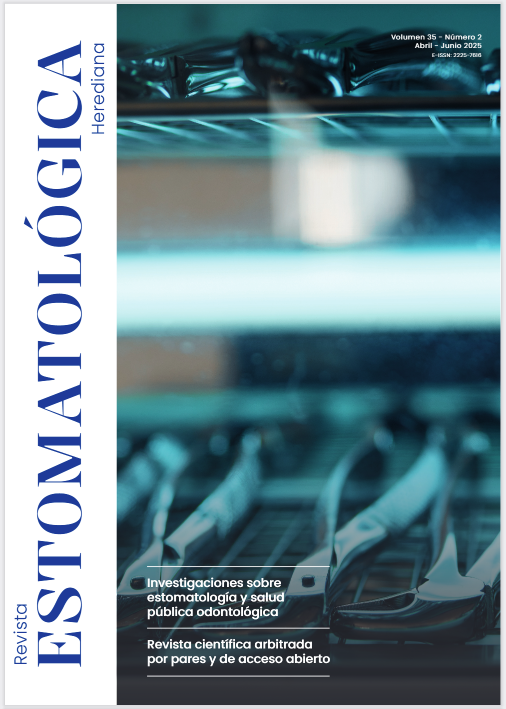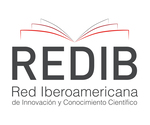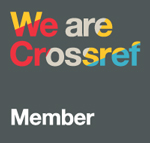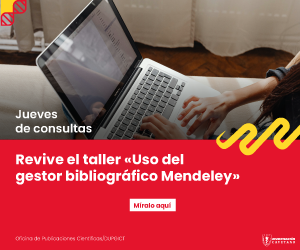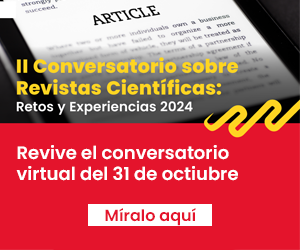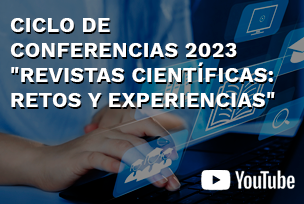Assessment of systemic stress in patients undergoing third molar surgery: use of in situ cortisol levels as an indicator
DOI:
https://doi.org/10.20453/reh.v35i2.5647Keywords:
oral surgery, cortisol, endocrine systemAbstract
Objective: To determine in situ serum cortisol levels in patients undergoing third molar surgery. Materials and methods: The study population consisted of patients from the University-Teaching Hospital of Chimbote (Hospital Universitario-Docente de Chimbote), who were selected based on inclusion and exclusion criteria. The sample consisted of 30 patients, from whom blood samples were taken at three different times (pre-, intra-, and post-operative) to determine serum cortisol levels using the ELISA technique. The values were transferred to a database and processed using descriptive statistical analysis (mean and standard deviation) and inferential analysis (Kruskal-Wallis and Tukey's tests). Results: Preoperatively, 66.7% (n = 20) of patients had serum cortisol levels within the normal range (50-230 ng/mL), while 33.3% (n = 10) had levels above 230 ng/mL. Intraoperatively, 60% (n = 18) of patients presented cortisol levels higher than 230 ng/mL, and postoperatively, this was observed in 56.7% (n = 17). A statistically significant increase in serum cortisol was found intraoperatively (285.53 ± 108.00 ng/mL) compared to preoperative values (198.00 ± 74.85 ng/mL), and this elevated level was sustained in the postoperative period (280.67 ± 113.09 ng/mL), although no statistically significant difference was observed between intra- and postoperative values. Conclusion: The present work reports significant in situ increases in serum cortisol levels due to the physiological alteration caused by surgical trauma, mantained until the post-operative period.
Downloads
References
Umeanuka OT, Saheeb BD, Uguru CC, Chukwuneke FN. Evaluation of cortisol concentrations in saliva as a measure of stress in patients having routine dental extractions. Br J Oral Maxillofac Surg [Internet]. 2015; 53(6): 557-560. Disponible en: https://doi.org/10.1016/j.bjoms.2015.03.011
Cázares de León F, Lozano Laín AJ, Gutiérrez Lizardi P, Salinas Noyola A. Grados de ansiedad en la extracción de un tercer molar impactado. Diferencias de género. Univ Odontol [Internet]. 2016; 35(75). Disponible en: https://revistas.javeriana.edu.co/index.php/revUnivOdontologica/article/view/18122
Fogelman N, Canli T. Early life stress and cortisol: a meta-analysis. Horm Behav [Internet]. 2018; 98: 63-76. Disponible en: https://doi.org/10.1016/j.yhbeh.2017.12.014
Pulopulos MM, Baeken C, De Raedt R. Cortisol response to stress: the role of expectancy and anticipatory stress regulation. Horm Behav [Internet]. 2020; 117: 104587. Disponible en: https://doi.org/10.1016/j.yhbeh.2019.104587
Hewagalamulage SD, Lee TK, Clarke IJ, Henry BA. Stress, cortisol, and obesity: a role for cortisol responsiveness in identifying individuals prone to obesity. Domest Anim Endocrinol [Internet]. 2016; 56(suppl): S112-S120. Disponible en: https://doi.org/10.1016/j.domaniend.2016.03.004
Bairero Aguilar ME. El estrés y su influencia en la calidad de vida. Multimed [Internet]. 2017; 21(6): 971-982. Disponible en: https://revmultimed.sld.cu/index.php/mtm/article/view/688
The AF, Reijmerink I, van der Laan M, Cnossen F. Heart rate variability as a measure of mental stress in surgery: a systematic review. Int Arch Occup Environ Health [Internet]. 2020; 93(7): 805-821. Disponible en: https://doi.org/10.1007/s00420-020-01525-6
Opaleye T, Okoturo E, Adesina OA, Oyapero A, Salami Y, Wemambu JC. Salivary cortisol as a stress monitor during third molar surgery. J Maxillofac Oral Surg [Internet]. 2022; 21(4): 1112-1118. Disponible en: https://doi.org/10.1007/s12663-020-01480-2
Conchado J, Álvarez R, Cordero G, Gutiérrez F, Terán F. Estrés académico y valores de cortisol en estudiantes de Medicina. RCTU [Internet]. 2018; 5(1): 77-82. Disponible en: https://doi.org/10.26423/rctu.v5i1.322
Russell E, Koren G, Rieder M, van Uum SH. The detection of cortisol in human sweat. Ther Drug Monit [Internet]. 2014; 36(1): 30-34. Disponible en: https://doi.org/10.1097/ftd.0b013e31829daa0a
Quade L, Králík M, Bencúrová P, Dunn EC. Cortisol in deciduous tooth tissues: a potential metric for assessing stress exposure in archaeological and living populations. Int J Paleopathol [Internet]. 2023; 43: 1-6. Disponible en: https://doi.org/10.1016/j.ijpp.2023.08.001
Ngueta G, Verner MA, Fiocco AJ, Lupien S, Plusquellec. P. Blood lead levels and hypothalamic-pituitary-adrenal function in middle-aged individuals. Environ Res [Internet]. 2018 ; 160: 554-561. Disponible en: https://doi.org/10.1016/j.envres.2017.10.032
Desborough JP. The stress response to trauma and surgery. Br J Anaesth [Internet]. 2000; 85(1): 109-117. Disponible en: https://doi.org/10.1093/bja/85.1.109
Gaona DC, Contento BE. Ansiedad preoperatoria en pacientes quirúrgicos en el área de cirugía del Hospital Isidro Ayora. Enferm Investiga [Internet]. 2018; 3(1): 38-43. Disponible en: https://dialnet.unirioja.es/servlet/articulo?codigo=6538730
Pacák K, Palkovits M, Kvetňanský R, Yadid G, Kopin IJ, Goldstein DS. Effects of various stressors on in vivo norepinephrine release in the hypothalamic paraventricular nucleus and on the pituitary‐adrenocortical axis. Ann N Y Acad Sci [Internet]. 1995; 771(1): 115-130. Disponible en: https://doi.org/10.1111/j.1749-6632.1995.tb44675.x
Acosta F, Diaz J, Moreno J, Fuente T, Contreras RF, Sansano T, et al. Relationship between beta-endorphin release and surgical stress in orthotopic liver transplantation. Transplant Proc [Internet]. 1995; 27(4): 2303. Disponible en: https://pubmed.ncbi.nlm.nih.gov/7652816/
Känel R, Kudielka BM, Hanebuth D, Preckel D, Fischer JE. Different contribution of interleukin-6 and cortisol activity to total plasma fibrin concentration and to acute mental stress-induced fibrin formation. Clin Sci [Internet]. 2005; 109(1): 61-67. Disponible en: https://doi.org/10.1042/cs20040359
Pruessner JC, Hellhammer DH, Kirschbaum C. Burnout, perceived stress, and cortisol responses to awakening. Psychosom Med [Internet]. 1999; 61(2): 197-204. Disponible en: https://doi.org/10.1097/00006842-199903000-00012
Kirschbaum C, Prussner JC, Stone AA, Federenko I, Gaab J, Lintz D, et al. Persistent high cortisol responses to repeated psychological stress in a subpopulation of healthy men. Psychosom Med [Internet]. 1995; 57(5): 468-474. Disponible en: https://doi.org/10.1097/00006842-199509000-00009
Cohen M, Pickard D, Dubois M, Roth YF, Naber D, Bunney WE. Surgical stress and endorphins. Lancet [Internet]. 1981; 317(8213): 213-214. Disponible en: https://doi.org/10.1016/s0140-6736(81)90081-7
Le Roux CW, Chapman GA, Kong WM, Dhillo WS, Jones J, Alaghband-Zadeh J. Free cortisol index is better than serum total cortisol in determining hypothalamic-pituitary-adrenal status in patients undergoing surgery. J Clin Endocrinol Metab [Internet]. 2003; 88(5): 2045-2048. Disponible en: https://doi.org/10.1210/jc.2002-021532
Roth-Isigkeit AK, Dibbelt L, Schmucker P. Blood levels of corticosteroid-binding globulin, total cortisol and unbound cortisol in patients undergoing coronary artery bypass grafting surgery with cardiopulmonary bypass. Steroids [Internet]. 2000; 65(9): 513-520. Disponible en: https://doi.org/10.1016/s0039-128x(00)00133-1
Khoo B, Boshier PR, Freethy A, Tharakan G, Saeed S, Hill N, et al. Redefining the stress cortisol response to surgery. Clin Endocrinol [Internet]. 2017; 87(5): 451-458. Disponible en: https://doi.org/10.1111/cen.13439
Godbout JP, Glaser R. Stress-induced immune dysregulation: implications for wound healing, infectious disease and cancer. J Neuroimmune Pharmacol [Internet]. 2006; 1(4): 421-427. Disponible en: https://doi.org/10.1007/s11481-006-9036-0
Soon K, Acton C. Pain-induced stress: a barrier to wound healing. Wounds UK [Internet]. 2006; 2(4): 92-101. Disponible en: https://wounds-uk.com/wp-content/uploads/2023/02/content_9096.pdf
Bhandage SG, Kurki MS, Sachdeva G, Shetty N, Kundu M, Yadav AB. Evaluation of efficacy of peri-operative administration of hydrocortisone and dexamethasone in prevention of post-operative complications in oral and maxillofacial surgeries. Rev Esp Cir Oral Maxilofac [Internet]. 2018; 40(4): 163-168. Disponible en: https://doi.org/10.1016/j.maxilo.2018.01.001
Downloads
Published
How to Cite
Issue
Section
License
Copyright (c) 2025 karina huamán mujica, vanessa sofía bermúdez garcía

This work is licensed under a Creative Commons Attribution 4.0 International License.
The authors retain the copyright and cede to the journal the right of first publication, with the work registered with the Creative Commons License, which allows third parties to use what is published as long as they mention the authorship of the work, and to the first publication in this journal.
